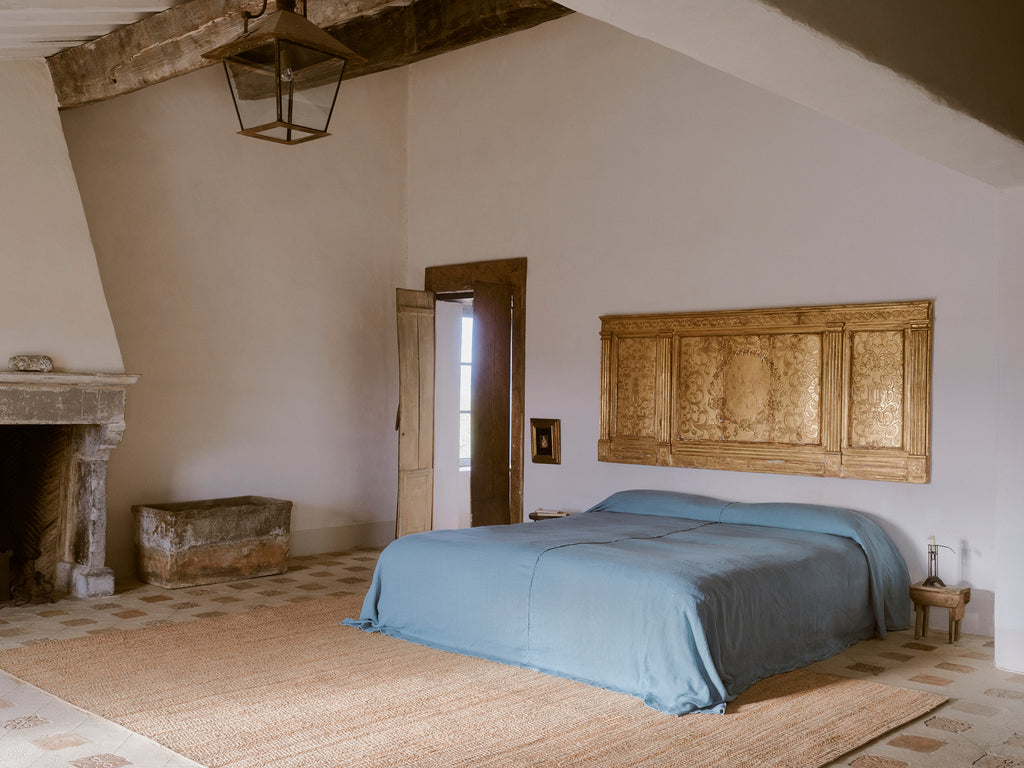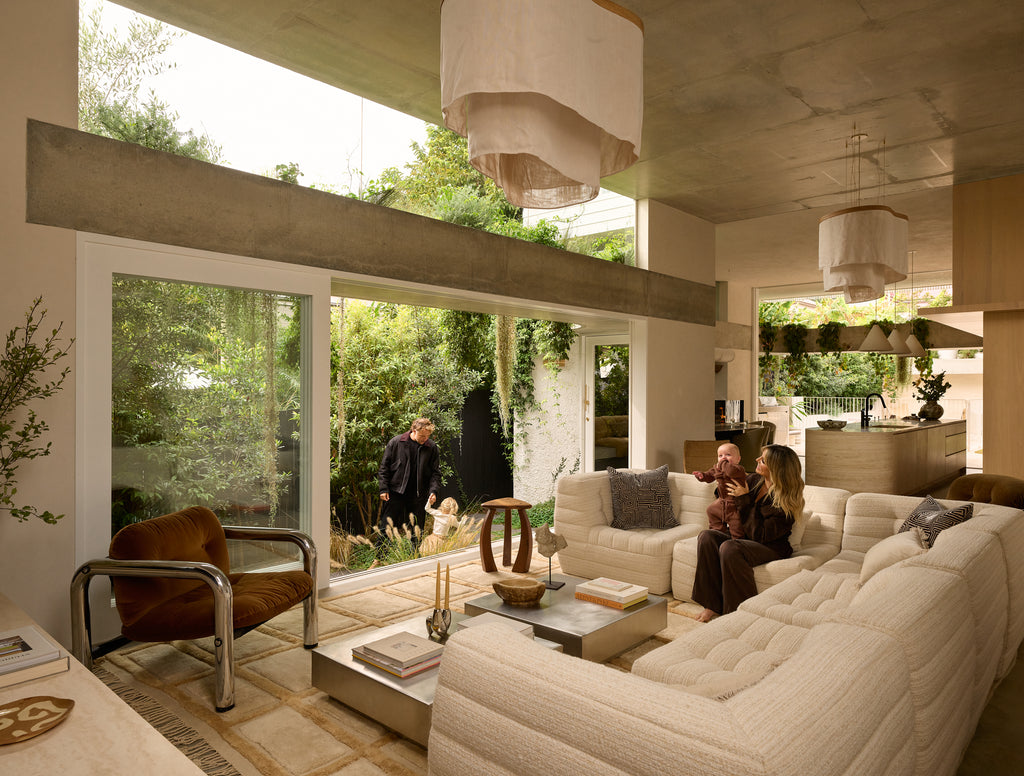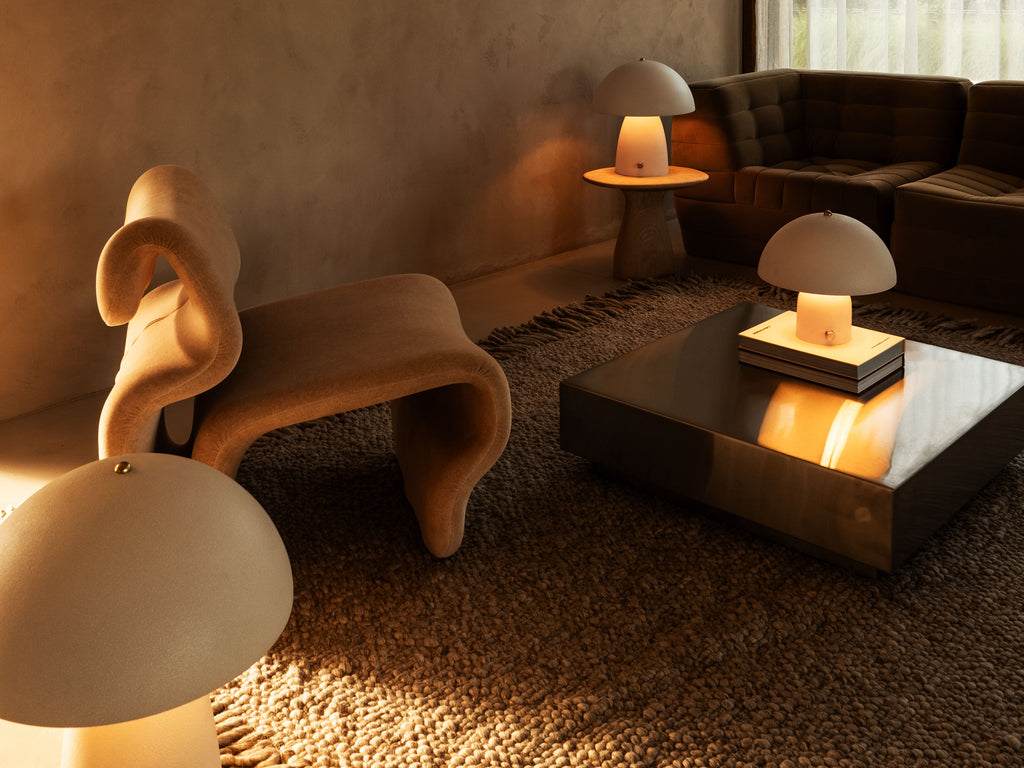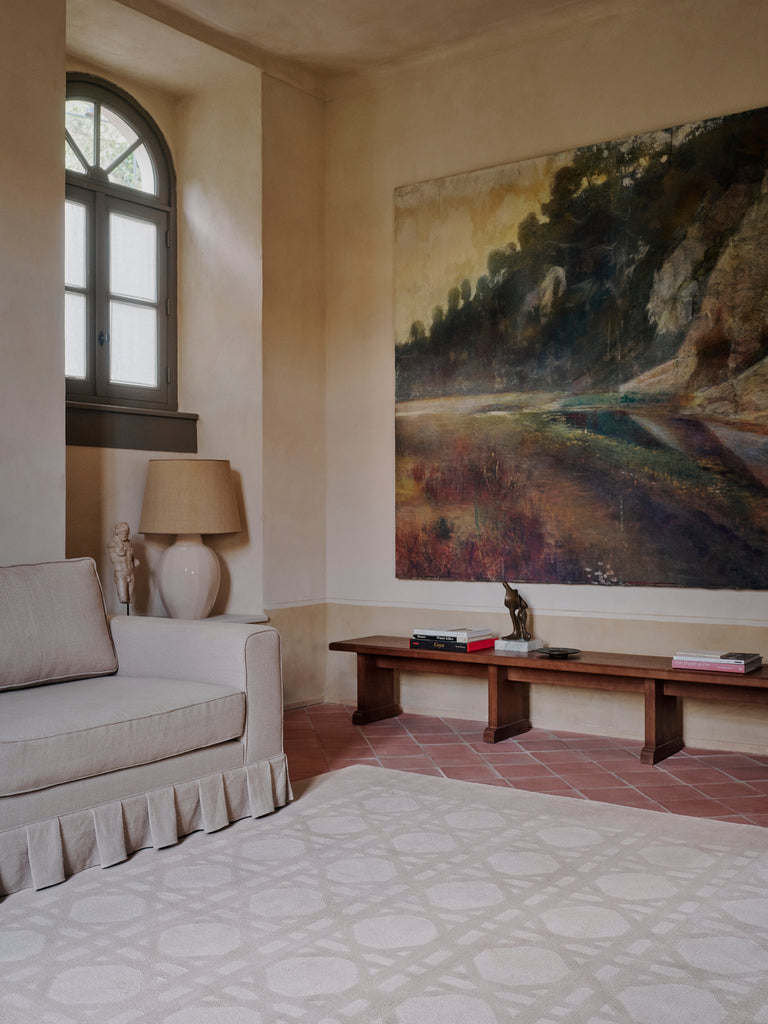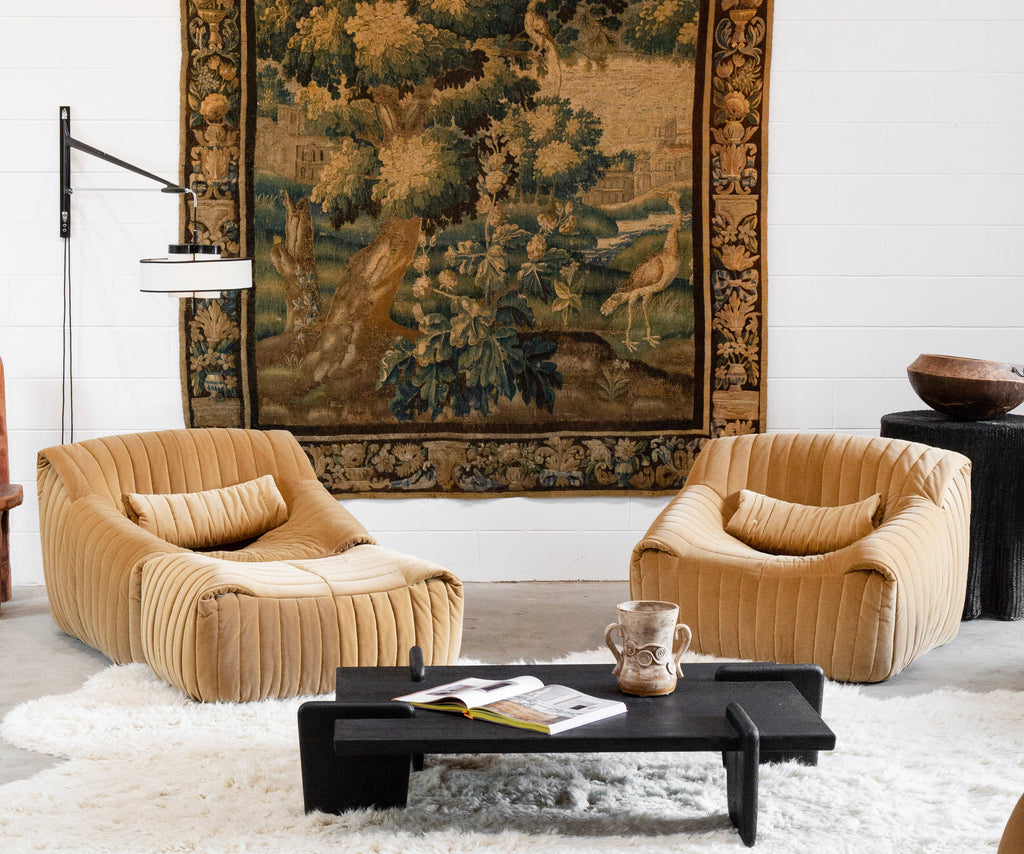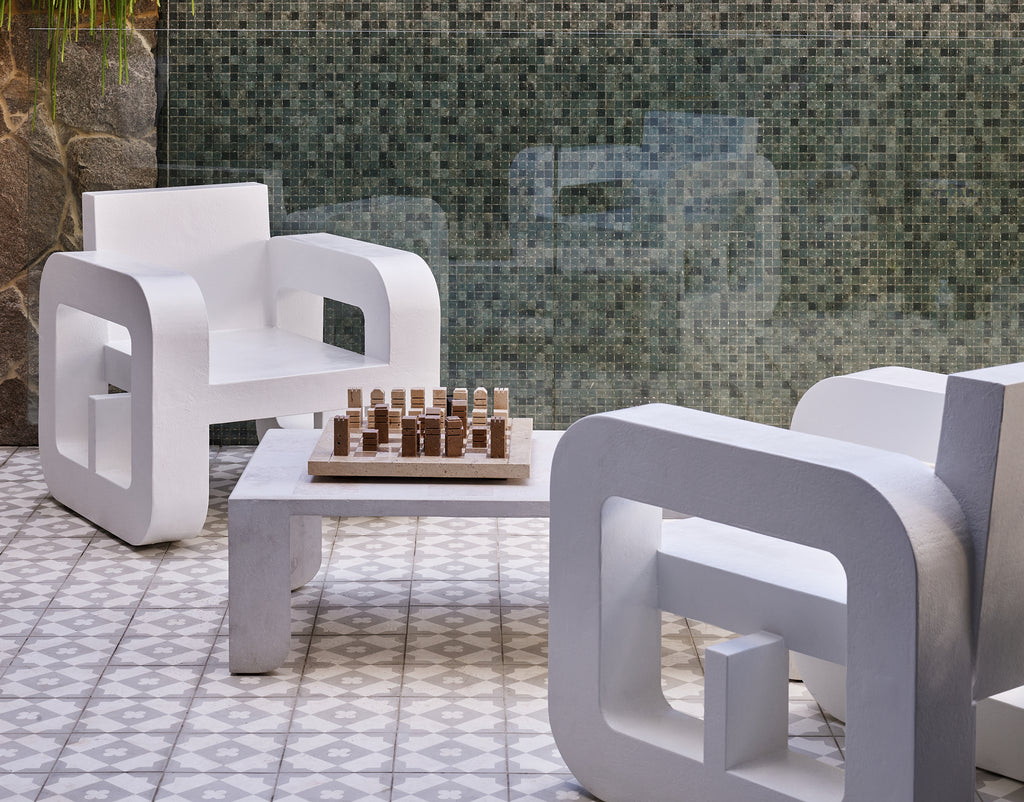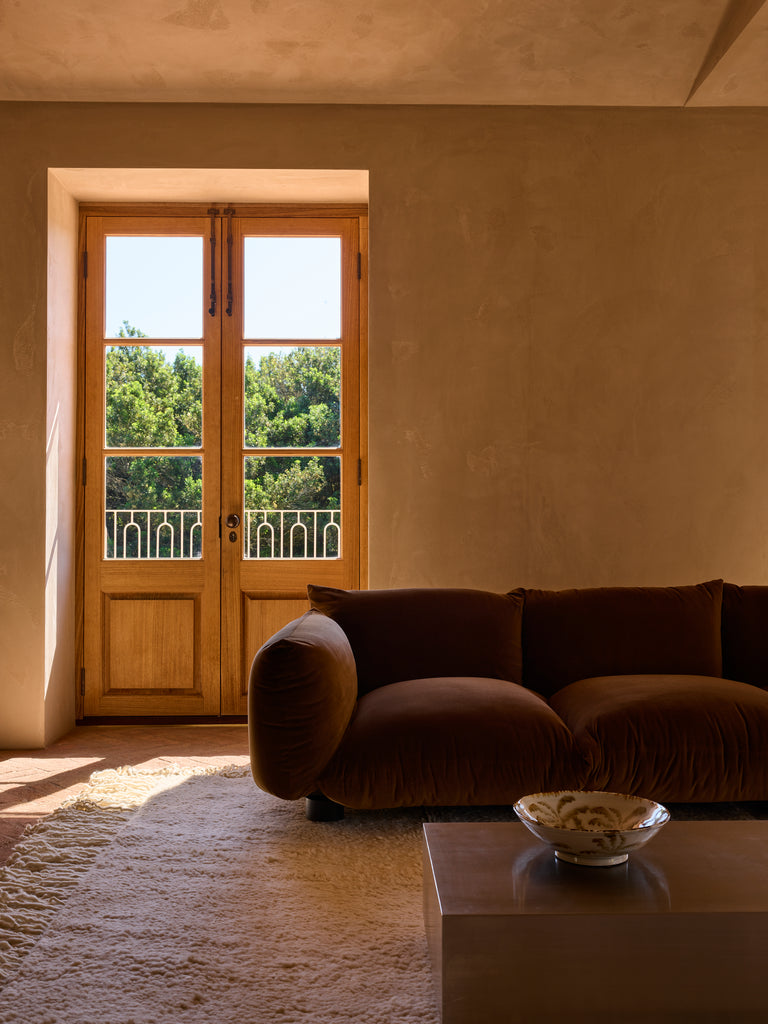
Tête-à-tête
Lex Williams
While his artistic approach is impulsive, working with timber is something Byron based artist Lex Williams was destined to do. With spontaneous designs, he allows for intuitive and uncontrived works to flow, that always reflect and celebrate the hidden character of the material. Creating beautifully emotive and sculptural pieces that hold a sense of ambiguity – Lex likes to think of his artworks as multi-purpose, functional art.
With sculptural works that capture a biomorphic quality, where legs look ready to take off in sprint and vessels look on the verge of a breath, one thing is certain; every piece tells a story, one that has been revealed by hand, and bound by open flame.
Welcome to the uniquely beautiful work of Lex Williams.
_______
How did you discover timber design, or how did this type of design discover you?
I inherently knew that I would work with timber. My father is a carpenter and mother a seamstress, I’ve always been surrounded by timber construction and craftwork. While studying design at RMIT I was captivated by the work of George Nakashima and was compelled to make timber furniture that holds its own character.
What would you say is the most significant piece you’ve worked on to date and why?
Whichever piece I am currently working on at any given time is most significant to me. Every piece of timber I work with teaches me something new about my craft. It's the process that holds significance for me more so than the finished product.
Some of your pieces acquire a Japanese technique called Shou Sugi Ban, could you talk to us a little about this?
The technique, which is more commonly referred to in Japan as Yakisugi, is a traditional method of wood preservation using an open flame - Yaki meaning heat, and Sugi meaning cypress. The process was designed to preserve by closing the timber's pores therefore lowering moisture absorption, making it fire resistant, and protecting it from insects.
The process yields unique results every time, which is reminiscent of the balance between creation and destruction. It reveals the subtle nuances of the timber grain and adds a sense of visual weight.



Do you feel timber design is a precise discipline or is there room for experimentation?
For me, it's a delicate dance between both - material selection, as well as the joinery aspect of construction, are very considered processes. This is integral for creating quality, long-lasting pieces. Conversely, I approach the sculptural process with a more whimsical attitude, allowing my intuition and creativity to take the reins.
How important do you feel functionality is to your designs?
Functionality is important, however, the term to me is subjective. I like to think of my works as multi-purpose - they can act as a functional piece of furniture, or as a freestanding art piece - or both. An unconventional piece can break up the predictability of an environment, adding flair to any given space and invoke emotive responses. That to me serves as a function in its own right.
Functionality is important, however, the term to me is subjective. I like to think of my works as multi-purpose - they can act as a functional piece of furniture, or as a freestanding art piece - or both.
Please talk us through your creative process.
I like to let the timber piece inspire my design and go from there. More often than not, I'll have the material in my studio for months until I'm suddenly hit with inspiration as to what it will become. It's an intuitive method of creating which I find most natural. A single piece can be defined enough, and I’ll move onto something else, and other times I'm inclined to make other variations.

What can you tell us about working with timber as a medium?
No two pieces of timber are the same - each has its character, which must be respected and worked in harmony with. I always strive to sculpt my works in a way that highlights the nuances of the wood and the seasonal growth rings of the tree. A flat board of timber will only show the growth rings on the end of the board, but an exaggerated chamfer, bevel, or abstract shape will reveal more insight into the trees life and story.
‘Liminality’ was the first collection you designed for Tigmi. Can you explain the significance of this to your work, or yourself?
Liminality means ‘threshold’ in Latin, referring more specifically to the middle stage in a rite of passage in which the participant no longer holds pre-ritual or completed ritual status. For me, it describes the comfortable uncertainty I experience amid my creative process, as well as the unique perspective it gives me on what has come before, and what may come next.
What or who are your greatest design influences?
I'm drawn to artists who look beyond conventional uses for materials to create work that holds a distinct atmosphere. I like to see remnants of their initial framework, therefore, allowing me to contemplate their process, while enjoying the finished piece. Some favourites: Andy Goldsworthy, Max Lamb, Katie Stout, Tamara Henderson, Johannes Nagel.


Tigmi is Berber for ‘my home’ - what do you feel your creative home of Byron Bay attributes to your pieces?
The Northern Hinterlands, which is where I spent my childhood, has always been an ideal place to nurture and explore my creativity. I especially enjoy the twilight hour, by the ocean and rural areas - it's a serene time. I find the subtle interplay of light and natural elements quite fascinating. It’s something I consider when I’m sculpting also.
What’s next for you Lex?
It depends on the timber.


